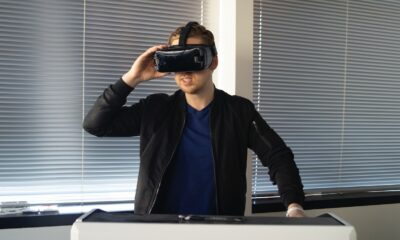TECHNOLOGY
Augmented Reality and Education

Augmented reality (AR) in education changes the perception of students and provides them with exciting learning opportunities through 3D visualization models.
AR increases the physical world providing digital information in real-time. The aim is to enhance user experience. In simple words, it is the collaboration of digital information with real-world physical elements. For instance, what if the History lessons at school could come to life and you could watch history repeat itself, literally? Amazing, isn’t it? Well, with AR, it is now possible to bring such creativity to life. AR in education enables experiential learning for students.

Benefits of AR in Education
AR offers many advantages to both teachers and students. Students will gain interest in their studies and will understand the concepts better through 3D models. The AR technology helps teachers provide attractive presentations on the not-so-interesting syllabus topics, thereby attracting student interest. Besides, students get to understand concepts via self-learning, using AR applications. AR in education eliminates the need for hard copy notes. A common problem with hard copy notes is that they can easily get damaged or misplaced. With AR, students can learn anytime-anywhere, without the need for textbooks or notebooks. With AR, students will get to learn concepts without getting bored.
Applications of AR in Education
There are endless ways in which AR can be used in education. For instance, imagine if you want to complete your homework and you just can’t remember a concept taught at school. AR can be used to record videos of lecturers solving problems and can be used by students to understand a problem statement’s solution by simply scanning the question from their smartphones.
Moreover, when a child is admitted to a school, her concerned parents will be worried if the faculty is well qualified to teach their child well. Such a situation can be solved by AR in the near future. For instance, schools can display the images of their faculty members right at the school entrance. Parents can scan these photos with their smartphones, which could result in a video popping out, wherein the faculty introduces itself.
Furthermore, AR can be used to invest parents in school initiatives. Parents can record their videos of encouraging their kids to learn and these can be transmitted to their ward’s desk. The use of AR in education could also enhance students’ vocabulary. For example, teachers can play a game where each day a student has to record a difficult word he learns. These difficult words could then be attached to the word wall and anyone could scan them with their smartphones. This will improve the vocabulary of students, thereby making the learning more exciting.
Along with incredible advantages to industries, such as construction, museums, manufacturing, and entertainment, AR in education can make the teaching and the learning process more fun-loving and satisfying.
Source link



















You must be logged in to post a comment Login